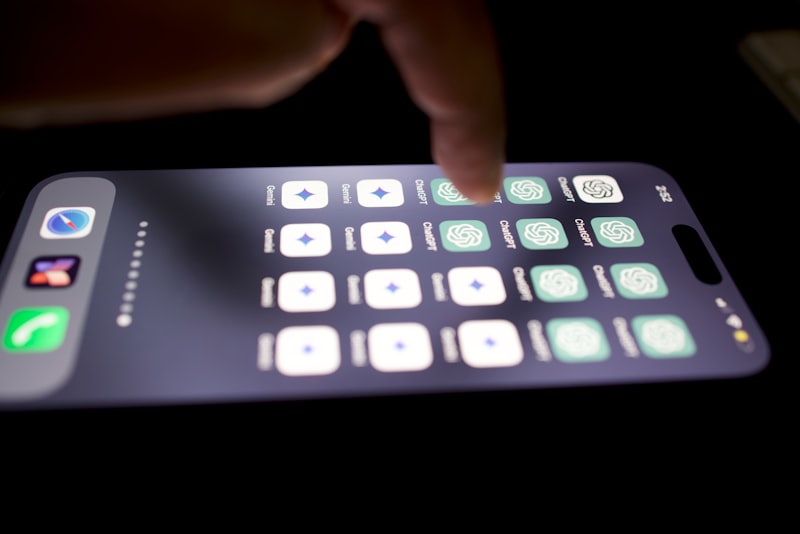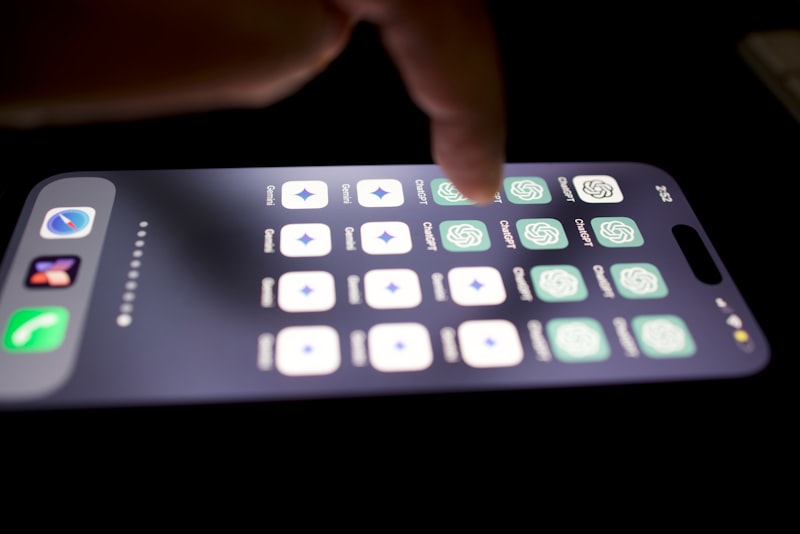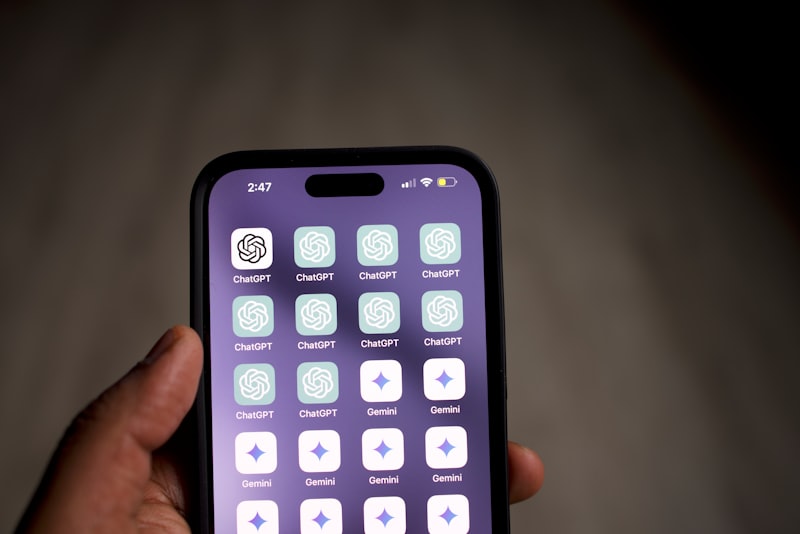Have you ever wondered if a student has been using ChatGPT to assist them with their assignments? Well, fret not! In this article, we will explore some telltale signs that can help you determine if a student has relied on ChatGPT for academic support. So, let’s dive in and uncover the clues!
Firstly, one indicator to look out for is an unusually sophisticated vocabulary or writing style that seems beyond the student’s usual capabilities. If they suddenly start using complex terminology or intricate sentence structures that don’t align with their previous work, it could be a sign of external assistance.
Another way to spot possible ChatGPT usage is by detecting a sudden shift in knowledge or expertise on a particular subject. If a student consistently struggled with a topic in the past but suddenly demonstrates a deep understanding without any evident progression, it might raise suspicions. ChatGPT’s vast database of information can provide them with a comprehensive grasp of various subjects almost overnight.
Additionally, keep an eye out for a lack of personal touch or originality in the content. ChatGPT generates text based on existing material, and while it can mimic human-like responses, it may still exhibit a certain robotic quality. If the student’s work lacks individuality or fails to reflect their unique voice, it could indicate the use of an AI assistant.
Furthermore, inconsistencies in formatting or referencing styles might serve as red flags. ChatGPT may struggle to adhere to specific citation guidelines or produce citations altogether. So, if you notice irregular citations or a deviation from the student’s usual formatting patterns, it may suggest external input.
Lastly, pay attention to the speed at which assignments are completed. If a student miraculously submits exceptionally lengthy or well-developed work within a remarkably short timeframe, it could be an indication that they have received substantial assistance from ChatGPT.
Remember, these signs are not definitive proof that a student has employed ChatGPT, but they can provide valuable insights into their academic practices. By staying observant and attentive to the nuances in their work, you can better assess the authenticity of their efforts.
Secrets Unveiled: 10 Clues That Reveal If a Student Relied on ChatGPT for Academic Assistance
Contents
- 1 Secrets Unveiled: 10 Clues That Reveal If a Student Relied on ChatGPT for Academic Assistance
- 2 Unmasking the AI Influence: Detecting Telltale Signs of ChatGPT Usage in Student Work
- 3 From Genius to Suspicion: How Educators Identify Students Who Leveraged ChatGPT in Their Assignments
- 4 Digital Footprints Exposed: Experts Share Techniques to Spot ChatGPT Utilization by Students
Introduction:
Have you ever wondered if your classmates or students are secretly getting academic assistance from AI-powered language models like ChatGPT? With the advancement of technology, it’s becoming increasingly difficult to discern whether someone has relied on such tools for their academic tasks. However, there are some clues that can help unravel this secret. In this article, we will explore ten telltale signs that indicate whether a student has sought help from ChatGPT.
-
Natural Language Fluency:
One of the most prominent indicators is the sudden improvement in a student’s writing style. ChatGPT can assist students in crafting well-structured and linguistically sound essays. If you notice a remarkable leap in their language fluency, it may be an indication that they have tapped into the power of AI. -
Advanced Vocabulary Usage:
AI language models possess an extensive vocabulary, which can result in the incorporation of sophisticated words and phrases by students. If an individual suddenly starts incorporating complex terms and expressions correctly, it could suggest they received lexical assistance from ChatGPT. -
Unique Insights and Perspectives:
ChatGPT is adept at providing unique viewpoints on various topics. If a student delivers a fresh perspective or introduces unconventional ideas that surpass their previous capabilities, it could signify that they have been exploring alternative perspectives through AI-generated content. -
Coherent Structure:
While AI-generated responses can sometimes be unstructured, students who rely on ChatGPT tend to adopt a logical organization of ideas. Their essays may showcase a clear introduction, well-developed body paragraphs, and a concise conclusion, indicating a potential AI influence. -
Immediate Responses:
ChatGPT excels in generating quick and accurate responses. If a student responds instantly to complex questions or engages in rapid-fire discussions, it might hint at their consultation with an AI language model for prompt assistance. -
Over-reliance on Online Sources:
Students who extensively rely on ChatGPT for academic help may exhibit a heavy dependence on online sources. They might reference articles or studies that are beyond their usual research capacity, indicating external influence from AI-generated content. -
Inconsistencies in Writing Style:
While AI models strive to mimic human-like responses, subtle inconsistencies can arise. Students relying on ChatGPT may inadvertently adopt certain phrase structures or expressions characteristic of AI, leading to a departure from their typical writing style. -
Lack of Personalization:
AI models like ChatGPT generate generic content. Consequently, students who rely heavily on these tools may produce work lacking personalization or originality. Absence of personal anecdotes or unique insights could be indicative of AI reliance. -
Uncommon Grammatical Errors:
Although AI models provide grammatically correct suggestions, they can occasionally introduce unconventional phrasing. If a student unknowingly incorporates unusual grammatical errors or adopts atypical sentence structures, it may suggest AI assistance. -
Sudden Knowledge Expansion:
Finally, if a student demonstrates extensive knowledge on a topic with minimal prior exposure, it raises suspicions about their information sources. ChatGPT’s vast database and ability to present diverse information can contribute to a rapid increase in a student’s subject knowledge.
Conclusion:
Unmasking the AI Influence: Detecting Telltale Signs of ChatGPT Usage in Student Work
Have you ever wondered if a student’s work truly reflects their own effort and understanding? With the rise of AI language models like ChatGPT, it has become increasingly challenging to discern between human-generated content and that which is assisted by powerful algorithms. Let’s dive into the intriguing world of detecting the subtle hints that reveal the influence of AI in student work.
One key aspect to pay attention to is the fluency of the writing. While AI algorithms have made significant strides in generating coherent text, they may occasionally falter when it comes to maintaining a truly human-like flow. By analyzing the naturalness of the language used, educators can identify deviations that suggest the involvement of AI assistance.
Another telltale sign is the presence of advanced vocabulary or complex sentence structures that surpass the student’s usual capabilities. If a student suddenly showcases an extensive lexicon or exhibits intricate grammatical constructions that differ from their previous assignments, it could be an indication of external AI influence.
Furthermore, the consistency of style and tone throughout the piece can provide valuable insights. Students tend to develop their unique voice and writing style over time, demonstrating recognizable patterns in their work. However, when AI is involved, there can be a noticeable shift in tone or an unusual departure from the student’s established style.
Grammatical errors are part of the learning process, but AI algorithms often excel at grammar and spelling. If a student consistently produces error-free text with impeccable grammar and syntax, suspicions may arise. It’s crucial to scrutinize such flawless execution, as it might imply artificial assistance.
Lastly, it’s essential to consider the depth and breadth of knowledge exhibited in the work. If a student suddenly demonstrates a profound understanding of complex concepts beyond their expected level of comprehension, it could indicate the integration of AI-generated information.
As technology continues to advance, educators face the challenge of distinguishing between genuine student work and content influenced by AI language models like ChatGPT. By carefully examining the fluency, vocabulary, style consistency, grammar proficiency, and depth of knowledge, educators can uncover the subtle signs that unmask the AI influence. Detecting these telltale indicators will enable educators to provide appropriate guidance and ensure academic integrity in an increasingly AI-driven world.
From Genius to Suspicion: How Educators Identify Students Who Leveraged ChatGPT in Their Assignments
Have you ever wondered how educators can identify students who have used ChatGPT to complete their assignments? It’s a topic that sparks curiosity and raises important questions about the impact of AI on education. In this article, we’ll delve into the journey from genius to suspicion, exploring the methods educators employ to detect when students have leveraged ChatGPT in their academic work.
When it comes to identifying students who have utilized ChatGPT, educators rely on a combination of factors. Firstly, they assess the sudden improvement in a student’s writing style or language proficiency. If a student’s previous work demonstrated average or below-average skills, but suddenly showcases sophisticated vocabulary, complex sentence structures, and a consistent fluency, it may raise suspicions.
Another key indicator is the presence of knowledge beyond the scope of the student’s learning. Imagine a high school student producing an essay discussing advanced scientific theories or referencing obscure historical events that were not covered in class. Such instances can be red flags for educators, prompting them to investigate further.
Additionally, teachers scrutinize the coherence and logical flow of the content. ChatGPT often generates well-structured paragraphs with smooth transitions, but these might lack personal insights or the genuine voice of the student. Educators pay attention to deviations in writing styles, inconsistencies in quality, or abrupt changes in tone as potential signs of external assistance.
Furthermore, plagiarism detection software plays a vital role in identifying the use of AI-generated content. These tools compare the submitted work against vast databases of existing texts, looking for matches or similarities. Although ChatGPT produces unique outputs, there might still be instances where students unknowingly include fragments similar to the model’s responses, triggering plagiarism alerts.
Educators are becoming increasingly vigilant, implementing strategies to catch instances of AI usage. They are incorporating personalized assignments and conducting oral assessments to gauge a student’s true understanding. By observing verbal explanations and questioning students about their work, educators can better determine if the knowledge presented aligns with their actual comprehension and abilities.
While ChatGPT offers tremendous potential for learning and creativity, educators are actively working to identify instances where students have relied on AI assistance. By considering changes in writing style, knowledge beyond the curriculum, coherence, and employing plagiarism detection tools, educators aim to maintain academic integrity and ensure that genuine learning takes place. The dynamic relationship between technology and education continues to evolve, prompting educators to adapt their approaches and foster a deeper understanding among students.
In this era of advanced technology and digital connectivity, students are leveraging artificial intelligence tools like ChatGPT to assist them in various academic endeavors. Though these language models can be useful, it is essential for educators and institutions to identify instances where students may be utilizing AI-generated content inappropriately. Experts have developed techniques to spot the utilization of ChatGPT and ensure academic integrity remains intact.
One effective method for identifying ChatGPT utilization is by analyzing writing style inconsistencies. Each individual has a unique way of expressing themselves through writing, including specific vocabulary choices, sentence structures, and personal nuances. Educators can carefully compare a student’s previous work with their current submissions to identify any sudden deviations indicative of AI-generated assistance.
Another technique involves analyzing the complexity and sophistication of the content. ChatGPT, although powerful, may struggle to maintain consistently high-level academic discourse or exhibit comprehensive domain knowledge. By closely examining the depth of understanding and subject-specific expertise demonstrated in an assignment, teachers can pinpoint potential AI assistance.
Furthermore, experts suggest evaluating the coherence and logical flow of the content. While AI models have improved, they can still occasionally produce text that lacks smooth transitions or exhibits abrupt shifts in ideas. Instructors can pay attention to these aspects when reviewing student work, as persistent issues in coherence might indicate the use of AI-generated paragraphs or sections.
To unveil potential ChatGPT utilization, educators can also leverage plagiarism detection tools. These tools have evolved to detect not only copied content but also instances where AI-generated texts have been incorporated without proper attribution. By regularly employing such software, instructors can discourage students from resorting to AI assistance without appropriate acknowledgment.
Ultimately, it is crucial for educators to cultivate an environment where students feel encouraged to seek guidance and support while respecting academic integrity. By actively monitoring and implementing these expert techniques, institutions can effectively identify instances of ChatGPT utilization, promoting a fair and ethical learning environment for all students.




